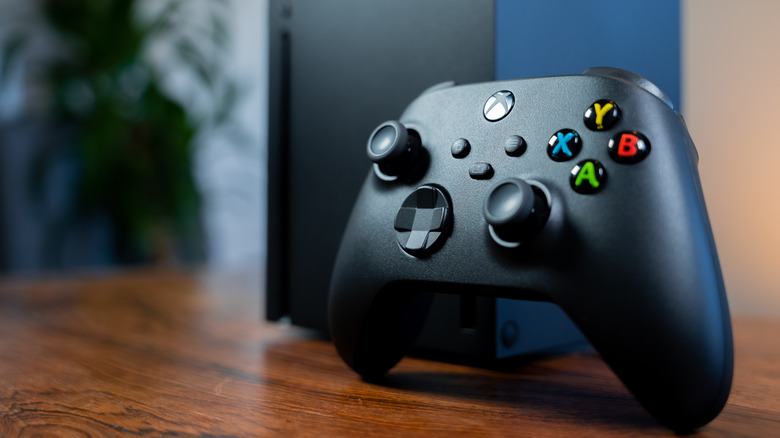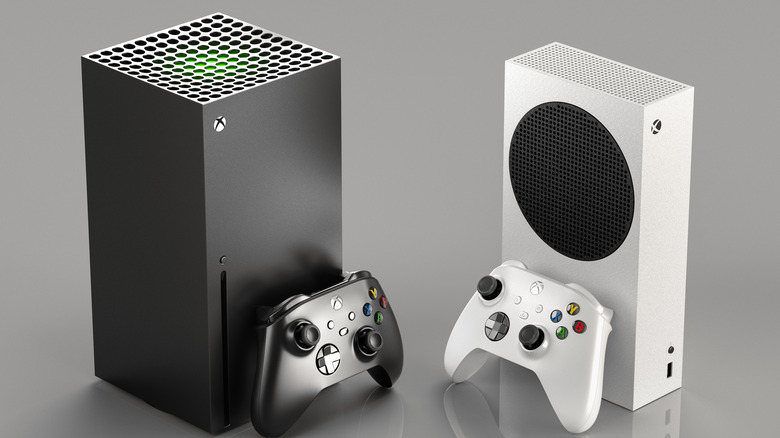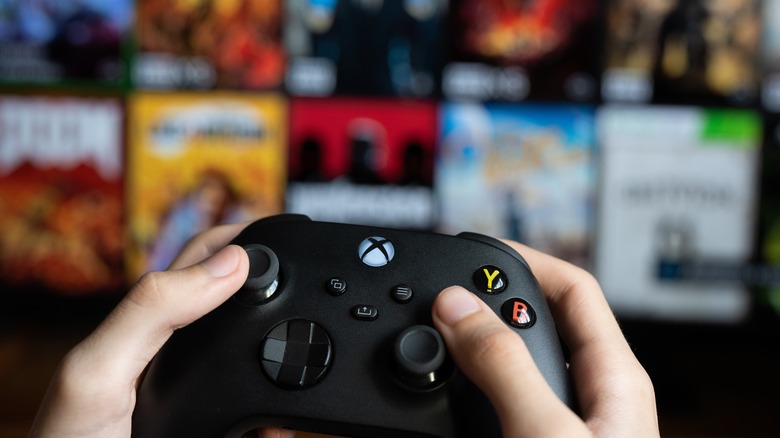How To Fix A Backwards Compatibility Error On Xbox Series X
One of the Xbox platform's biggest selling points is its deep backwards compatibility library, allowing you to natively play hundreds of titles dating all the way back to the original Xbox. Whether you want to relive Sam Fisher's glory days in "Splinter Cell" or catch up on "Dead Space" before the sequel arrives, Xbox gamers appreciate Microsoft's commitment to keeping the classics alive. And they're not just playable – some will look and perform even better than you remember.
Sadly, the backwards compatibility experience on Xbox Series X and Xbox Series S isn't always perfect. You can run into issues that cause your cloud save data to fail syncing, and trying to go online for a spot of old school multiplayer isn't always reliable, whether due to shrinking player bases, retired servers, or Xbox Live network issues.
One of the most common problems, however, is the dreaded backwards compatibility error. This error code can pop up at random when you're trying to launch an older title. Don't assume you've lost access, though; the following measures can solve a the hiccup in mere minutes.
Make sure your console is up to date
This might seem obvious, but you'll first want to make sure your Xbox Series X or Series S console is fully updated. Chances are that it is, but it's always worth checking.
If it's not updated, you could be missing out on a bug fix that may have already addressed the issue you're facing. If you did receive the latest software, there may have been a new bug introduced that caused the issue. Here's how to check:
-
Open "Settings" on your Xbox Series X|S.
-
Navigate to "System," then click "Updates."
-
If an update is available, click the "Console update available" button.
-
Your console will download and apply the update before restarting.
If no update is available, you'll see the button grayed out with the label "No console update available." You can check details about the latest firmware by clicking "Latest console update status," and then click "What's new" to view the exact version number and all the changes that were made in the latest update, which may be helpful when you're doing further troubleshooting. You can also find your console version by going to Settings > System > Console info.
Try clearing your Xbox 360 storage
If your Xbox Series X|S is on the latest firmware and you suspect everything should be working, you'll be happy to know that there is a feature included specifically to help troubleshoot this very issue. You can clear the local storage cache for Xbox 360 titles, which would essentially give your console a digital refresh in case certain assets have been misplaced or damaged.
Note that this will delete all of the Xbox 360 games, game saves, and profiles that are stored locally on the console, meaning you will have to redownload your games. Thankfully, any saves that are stored in the cloud will be resynced the next time you boot them up. Getting to there is pretty easy:
-
On your Xbox Series X|S console, open "Settings."
-
Select "System," and then select "Storage."
-
Find the "Delete local Xbox 360 storage" option on the left and select it.
-
Confirm you want to delete the storage by clicking "Yes" in the dialog box.
-
Wait for your console to reset.
-
Redownload your Xbox 360 games and try to boot them up.
If all else fails, give Microsoft a call
If you can't get things working from there, try calling Microsoft. The Xbox support team may guide you through some of the same troubleshooting steps listed above, but they would have the best and most up-to-date information on any issues you might be facing. Be sure to share any error codes you receive with the support agent, and tell them everything that's going on in the best detail possible.
Microsoft might also suggest a full software reset, which is inconvenient to say the least. If you decide to try it, make sure you backup your games to an external hard drive so you won't have to spend too much time redownloading them after. Once your Xbox is back on, your dashboard and preferences should be preserved, and your game saves are in the cloud, so there's not a ton of setup time outside of signing into your account and transferring games back to your internal storage.
If Microsoft still can't help resolve your issue, it may suggest sending the console in for a repair check. This will cut into your gaming time – especially with turnaround times that can take as long as three weeks – so only exercise that option as a last ditch effort if nothing else seems to be working.



